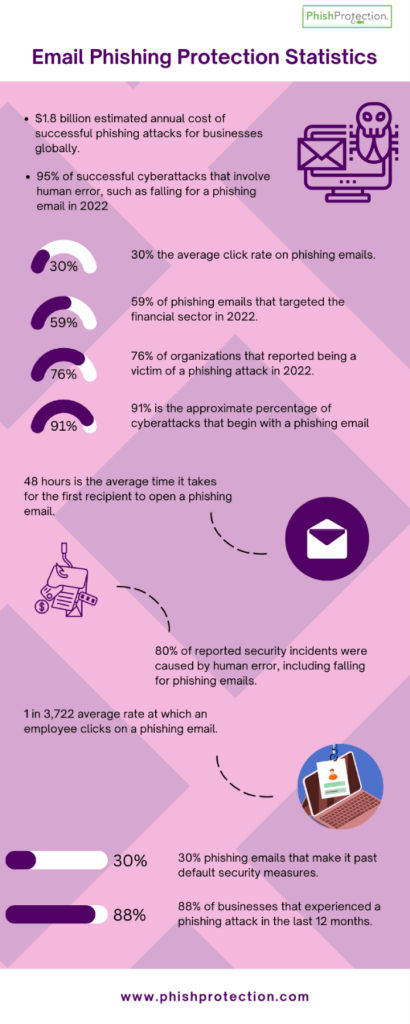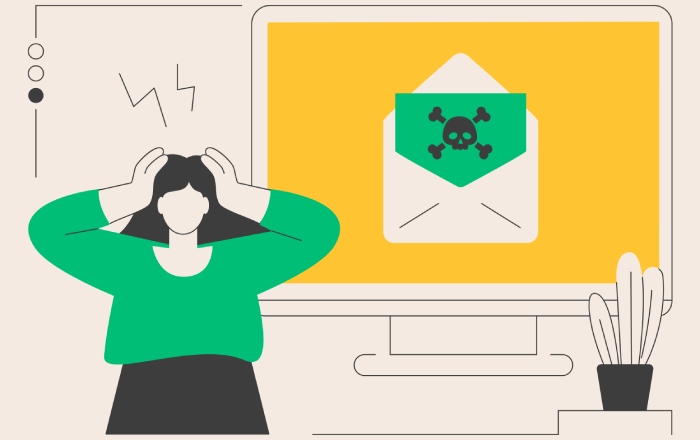This text shares a multi-layered approach to email phishing protection and showcases what organizations need for robust phishing protection.
In today’s digitally interconnected world, protecting against the ever-evolving threat of phishing attacks has become paramount for organizations across the globe. Malicious actors continuously refine and innovate their tactics to deceive unsuspecting individuals and organizations, making it imperative for businesses to adopt a multi-layered approach to enhance their phishing protection.
This article delves into a comprehensive strategy that integrates multiple layers of defense. It empowers organizations to safeguard their valuable data assets’ confidentiality, integrity, and availability by mitigating the risks associated with phishing attacks.
Need for a Multi-Layered Approach to Phishing Protection
Cyberattack techniques are constantly evolving, requiring a comprehensive defense strategy. The prevalence of sophisticated phishing attacks has necessitated a multi-layered approach to cybersecurity. Human vulnerability remains significant, as employees can inadvertently turn a reason for successful phishing attacks.
By implementing a multi-layered approach, organizations can address these challenges effectively. Each layer, including advanced cybersecurity technology, user training, and vigilant IT security teams, contributes to a more robust defense setup against phishing threats. This comprehensive approach minimizes the risk of successful phishing attacks and enhances the overall security posture. Below is a detailed look at the different layers that organizations must implement.
Layer 1: User Education and Vigilance
The first line of defense against phishing attacks lies in educating users and fostering a culture of vigilance within the organization. Comprehensive training programs should be implemented to familiarize employees with various phishing techniques, including spear phishing, and the red flags associated with such attacks.
By emphasizing the importance of scrutinizing email content, avoiding suspicious links, and promptly reporting potential threats, organizations empower individuals to play a crucial role in mitigating phishing risks.
Layer 2: Robust Email Security Measures
Email continues to be a prime channel for phishing attacks, necessitating robust email security measures. You can employ cutting-edge technologies, such as Machine Learning (ML) algorithms and advanced threat detection systems, to identify and halt phishing emails before they reach users’ inboxes.
Organizations can proactively detect and prevent phishing attempts by leveraging real-time scanning, anomaly detection, and threat intelligence data, significantly reducing the likelihood of successful compromises.
Layer 3: Strengthening Perimeter Defenses
Securing the organization’s network perimeter is vital to thwarting phishing attacks at the entry point. Employing state-of-the-art firewalls, intrusion detection and prevention systems, and secure email gateways bolster the organization’s defenses against phishing threats.
These solutions apply deep packet inspection, behavioral analysis, and reputation-based filtering techniques to identify and block suspicious traffic, ensuring that phishing emails and attempts are intercepted before reaching internal networks.
Layer 4: Endpoint Protection and EDR (Endpoint Detection and Response)
Protecting individual endpoints, such as laptops, desktops, and mobile devices, is a critical defense layer against phishing attacks. Organizations can detect and neutralize phishing attempts at the endpoint level by implementing robust antivirus, antimalware, and EDR (Endpoint Detection and Response) solutions.
These security measures continuously update the organization’s threat intelligence databases, promptly identifying and preventing emerging phishing threats. Moreover, integrating these solutions with email clients adds a layer of protection, proactively intercepting and alerting users to potentially malicious emails.
Layer 5: Continuous Monitoring and Incident Response
Establishing a dedicated team for monitoring and incident response ensures proactive identification and swift mitigation of phishing attacks. SIEM (Security Information & Event Management) tools can be leveraged to monitor network traffic, email communications, and security systems in real-time, detecting anomalous activities and potential phishing indicators.
This continuous monitoring enables organizations to respond promptly to phishing incidents, minimizing the impact and enhancing their overall phishing protection strategy.
The Onion Paradigm: Another Multi-Layered Approach to Robust Phishing Protection
The Onion Paradigm is yet another multi-layered cybersecurity approach that emphasizes the importance of user training, dedicated training teams, vigilant IT security, and advanced cybersecurity technology to reinforce defenses against phishing attacks.
Here’s a concise breakdown of the critical layers:
- Users: Employees are vital in the fight against phishing. Preventing phishing attacks and providing anti-phishing training are essential for adequate phishing protection. By familiarizing users with policies and educating them about common scams and how to avoid them, organizations empower their employees to be the primary line of defense against phishing attacks.
- Training Team: A dedicated team ensures employees receive relevant, state-of-the-art anti-phishing training. The group provides coaching, disseminates knowledge on policies and processes, and raises awareness about cybersecurity software, enhancing phishing protection.
- IT Security Team: The IT team maintains software and hardware security, establishes protocols, and informs about evolving phishing techniques and risks. Their proactive efforts complement user training by efficiently monitoring, analyzing, and addressing potential phishing attacks.
- Cybersecurity Technology: Robust cybersecurity technology, including firewalls, email security, web security, DMARC (Domain-based Message Authentication, Reporting & Conformance) Analyzer, cloud security, and information protection, prevents phishing attacks from infiltrating networks. MDR (Managed Detection and Response) services and MSSPs (Managed Security Service Providers) efficiently oversee and monitor these technologies, strengthening phishing protection.
Final Words
In the relentless battle against phishing attacks, organizations must adopt an all-encompassing multi-layered approach to strengthen their defenses. Businesses can enhance their phishing protection capabilities by prioritizing user education, implementing robust email security measures, fortifying the perimeters, protecting individual endpoints, and establishing vigilant monitoring and incident response procedures to a significant extent.



